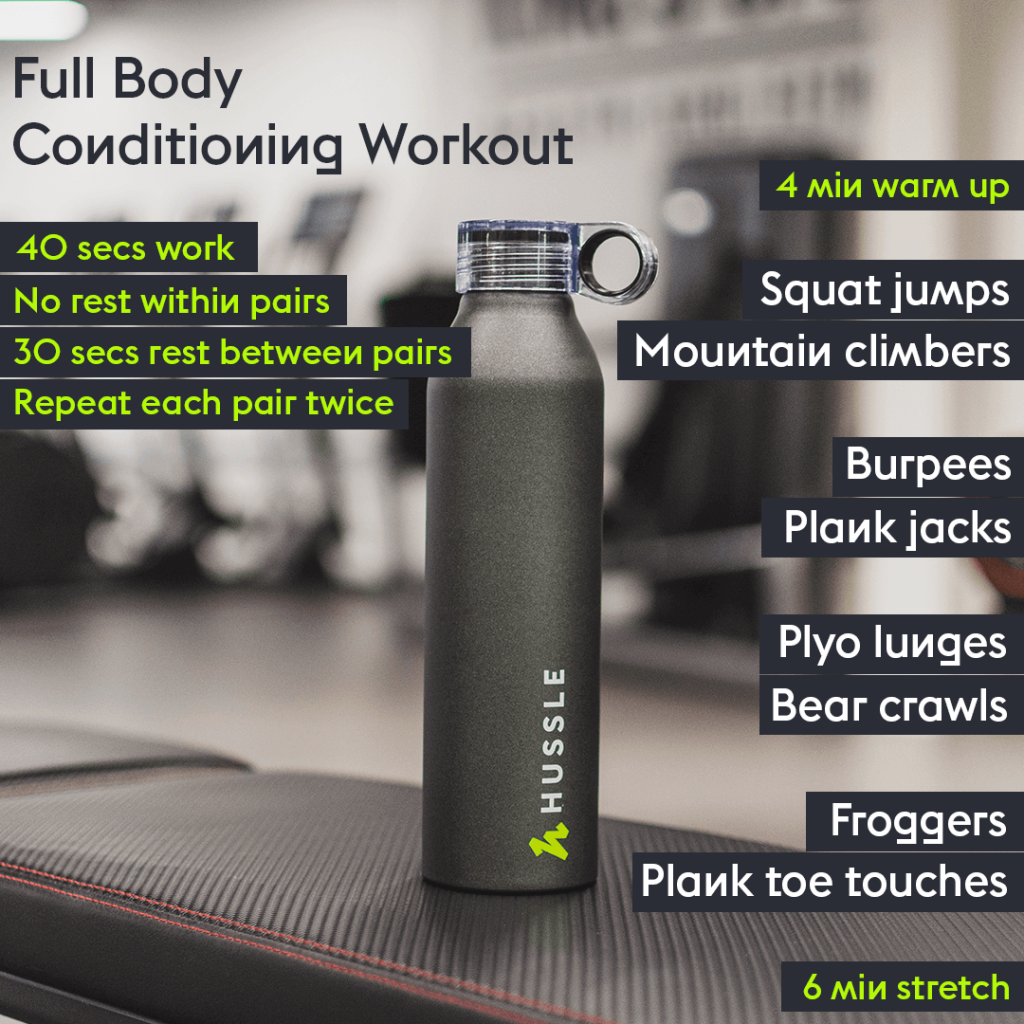The fitness world is not short of buzzwords. When we think we’ve gotten to grips with one, another phrase starts circulating that we need to Google.
So, what is body conditioning? Used to describe training types and often the name for some fitness classes, is body conditioning the breakthrough approach to peak physical fitness? Or is it just another phrase to describe a lot of the exercises we’ve been doing already?
Are you an employer? Hussle now offer flexible, discounted access to our fitness venues as an employee benefit. Elevate employee wellbeing.
What does body conditioning mean?
Body conditioning is, you guessed it, the act of improving the condition of your body. Essentially, it’s a fancy term for enhancing your physical fitness.
Because there are many components of physical fitness and many different parts of the body, the term body conditioning is often used to describe exercise classes and routines that attend to lots of the different areas in one workout.
There are five main components of physical fitness. Cardiovascular fitness, muscular strength, muscular endurance, flexibility/mobility, and body composition. Developing these types of fitness will lead to adaptations and changes in the body in response to the exercise being done, which will improve the condition of the body.
What is body conditioning then?
Body conditioning is exercise that develops well-rounded and full-body physical fitness to improve the condition of the body. Those looking to increase their strength, tone up, increase their heart rate, and generally get fitter would benefit from a conditioning class.
That means conditioning classes won’t just work the muscles in your chest or your legs. It will work on your whole body, including all the major muscle groups you can think of. It’s a total body workout. It also won’t just test your cardiovascular or aerobic fitness. It will also develop your muscular strength, muscular endurance, and flexibility.
There’s a lot to be done in a conditioning workout, so expect intensity.
What’s an example conditioning workout?
There’s quite a variety of exercises involved in total body conditioning. That means that no class will be the same. Great for those who get bored quickly and need to keep it fresh to keep motivated.
However, there are a few key exercises that you can expect to see often because of their compound and intense nature.
Burpees are most people’s least favourite exercise, but they are a body conditioning favourite. The explosive movement will get your heart rate up and test your cardio capacity, but burpees are also a test of strength and endurance from the squat and push-up portion of the movement.
Squat jumps are a conditioning class staple. They’re another explosive and heart-raising movement that tests your lower body and core strength from the squat.
Mountain climbers can also feature heavily in conditioning classes. Starting from the plank positioning, the exercise will work your core muscles and get you into an aerobic zone.

What other types of conditioning are there?
Sometimes, you might hear the word conditioning in other contexts surrounding fitness and exercise. The conditioning part just describes the act of improving the condition of something. So, it’s the word that comes before that will tell you what is being improved.
Strength and conditioning are often thrown about. It describes workouts that focus on strength training and will also test other fitness areas like muscular endurance to create a well-rounded workout. Here you can expect less of the cardio-based stuff and not many flexibility exercises, but more likely a focus on resistance training that will work on your muscular system.
Aerobic conditioning is another term you might hear. Unsurprisingly, the focus in this workout would be on developing your aerobic fitness. That means a conditioning workout that’s going to get you breathing heavily. Rather than short, sharp bursts of activity, you’ll be training at a consistent level for more than just a few minutes. You’ll want to bring a sweat towel to this one.
What are the benefits of body conditioning?
Improves the physical condition of the body
Training and developing physical fitness will cause the body to change and adapt in many ways that will benefit health and well being. The value of exercise is undeniable, so anything that boasts a total body workout is a positive.
Time-efficient.
Body conditioning, in particular, is helpful for those who are short on time. Suppose you’re not dedicated to spending all your free time in the gym but are looking to keep fit without having to overthink specific goals, training types, and progression plans. In that case, conditioning workouts are the perfect fit for your routine.
Easy to replicate.
Body conditioning classes will help you get an effective and efficient workout in. You can also do them yourself. Find your favourite exercises and string them together to create your own routine that motivates you to exercise. And most importantly, that you enjoy. It’s for everybody. It’s an all-encompassing word to describe the efforts towards a healthy and fit body.
When you’re ready to try body conditioning or just continue your workout with a new term to describe it, use Hussle to help.



